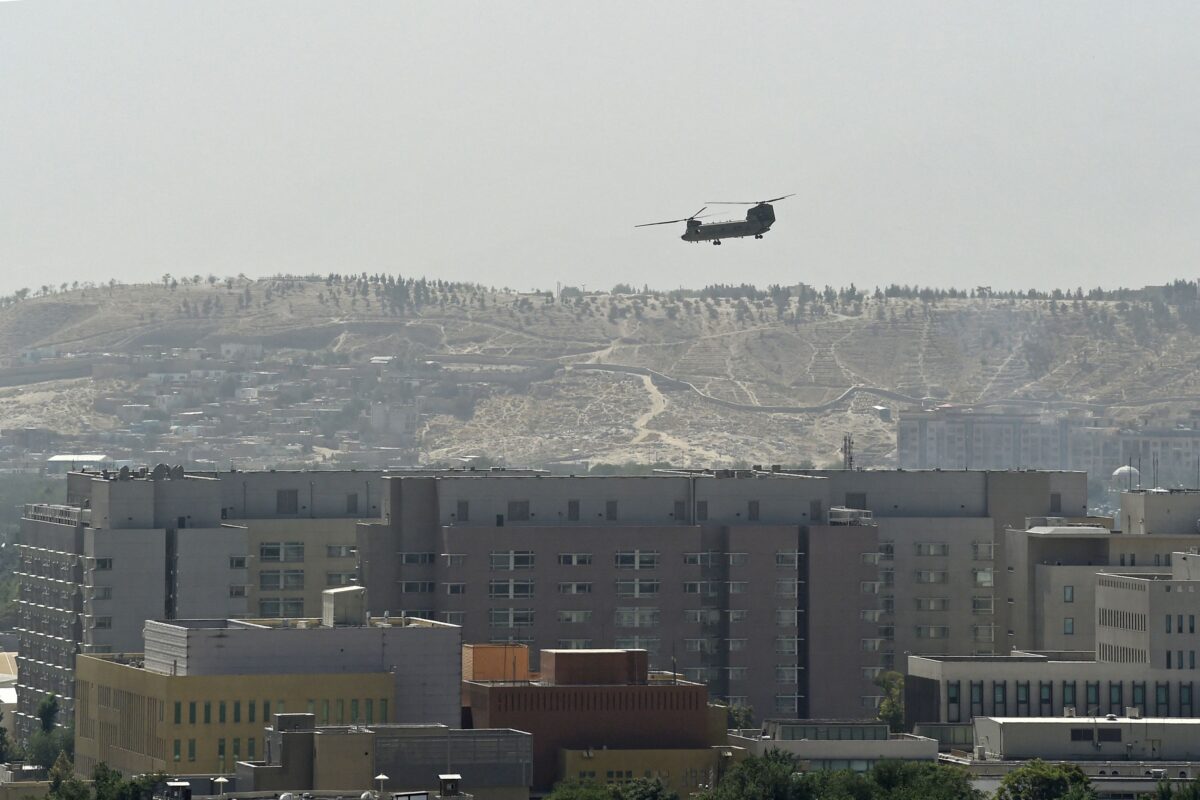Many of the reports coming out of Afghanistan this past week mention something that is simultaneously deplored and swept under the rug.
I mean the fact that when the United States raised the white flag to the Taliban it left behind an enormous amount of American-made military hardware.
Just a couple of weeks ago, all of that war-making matériel had been the property of two entities.
Some belonged to U.S. forces themselves.
A lot of it belonged to the U.S.-supplied Afghan government that was—the mighty 300,000 man-strong force that, on July 8, President Joe Biden said would prevail over the Taliban if push came to shove.
Push did come to shove, as we all know, and now those vast stores of military hardware are under sole control of the Taliban.
There have been several differing inventories of these stockpiles. One just published in the London Times provides perhaps the most authoritative accounting published to date.
Scattered in seven Afghan army garrisons across the country, from Kabul and Kandahar to Herat, Mazar-Sharif, Kunduz, these arms depots include an impressive amount of U.S. military hardware: 22,174 armored Humvees, for example, 42 pickup trucks and SUVS, 64,363 machine guns, 162,043 radios. 16,035 night vision goggles, 358,530 assault rifles (the real ones, not the “assault rifles” that Joe Biden warns about at home), 126,295 pistols, and 176 artillery pieces.
And that’s just for starters. The U.S. also generously left behind more than 100 helicopters, including 33 Blackhawks, 4 C-130 transport planes, and some 60 other fixed-wing aircraft.
There was also oodles of ammunition to go along with all the loot.
The question that has not really been pressed about this rather awe-inspiring armory is, why?
Why did we leave it behind to be used by the Taliban?
I don’t believe that question has been addressed with anything like the determination it deserves.
Some people have suggested that it was just a matter of simple incompetence on the part of the Biden administration, particularly the State Department, which is overseeing the evacuation, and the president himself, who apparently chose to ignore advice from some of his advisors about the time table for the evacuation.
But I suspect there is something more insidious than simple incompetence.
What we’re dealing with here is politicized, and therefore, malevolent incompetence.
This is beginning to be recognized in some surprising venues.
The New York Times, for example, just published an op-ed by Elliot Ackerman, a former Marine who is part of a group of “veterans, journalists, and activists” who have been privately helping to organize evacuation efforts in Afghanistan for months.
“Never,” Ackerman wrote, “have I witnessed a greater, swifter collapse of competence than what I have seen with the U.S. evacuation of Afghanistan.”
Nor is he shy about identifying the source of the pandemonium: “Events at the airport—desperation, death—indicate the extreme chaos that ensues when the commander in chief doesn’t actually understand the value of service.”
Like many observers, Ackerman focuses mainly on the chaos in Kabul.
But I continue to wonder about all that fire power and supporting matériel that we have left behind.
Why did we do so? Why did we not destroy it?
As far as I know, no one has answered those questions.
Of course, military hardware is not all that we have left behind.
The evacuation “mission” is apparently also leaving behind hundreds of Americans.
According to Rep. Dan Crenshaw, among others, “Biden is not letting U.S. citizens through the airport gates. It has been impossible to get anyone through for the last 24 hours.”
Crenshaw concludes: “This administration has been lying about their intent to save Americans. Unforgivable.”
Biden has been quick to try to shift the blame for this whole debacle onto Donald Trump. “He made a deal with the Taliban!” is his constant refrain.
But Biden neglects to point out that Trump had a plan to leave by the beginning of May, before the “summer fighting season,” and well before the Taliban had overrun the country.
Biden came up with his own timetable for the optics: he wanted to be able to claim the credit for ending “America’s longest war” and to do so in a way that would deny Trump any credit for it.
It has backfired spectacularly, and the blowback, I predict, is far from over.
For those who wonder about the kinder, gentler Taliban that Biden is partnering with, we’re already getting some vivid indications.
Sure, they post pictures of themselves eating ice-cream to taunt Biden.
I have even seen reports that they have bought or are planning to buy a painting by Hunter Biden to install in the Presidential palace.
Maybe that’s satire, who knows?
The Biden administration and its media poodles keep suggesting that the Taliban may be turning over a new leaf. I think you would have to be mad to think so.
One representative incident: The London Times is reporting that “Taliban fighters have shot dead an Afghan folk singer after it outlawed music and women’s voices on television and radio in the bellwether province of Kandahar, laying the ground for a nationwide ban in an echo of the brutal Islamist regime of 20 years ago.”
Uh oh.
What have we left behind in Afghanistan?
The brilliant editorial cartoonist Michael P. Ramirez provided the crispest summary in his cartoon for today.
A big transport helicopter is flying over our (former) embassy in Kabul. One speech balloon asks: “What did we leave behind.”
The other answers: “Our credibility.”
What We Left Behind in Afghanistan (theepochtimes.com)
